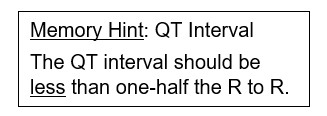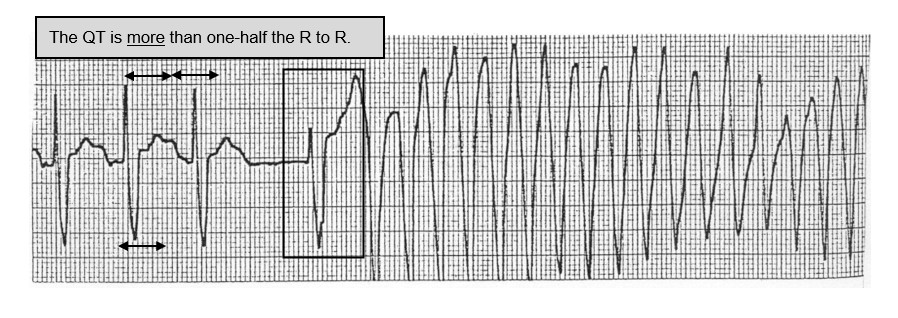Pearls of Knowledge: Torsades de pointes

Dysrhythmias: Torsades de Pointes
Pearls of Knowledge © BrainyNurses.com
Torsades de pointes is a life-threatening type of ventricular tachycardia that is associated with a prolonged QT interval. The QT interval is comprised of the absolute (ARP) and relative refractory (RRP) periods. During the absolute refractory period, no stimulus can cause an electrical response in the heart. During the relative refractory period, a strong stimulus can trigger a response, such as Torsades de pointes.

The prolongation of the QT interval may be due to a congenital defect but is most frequently caused by drug therapy (of which, there are many). A prolonged QT interval is also seen in electrolyte imbalances, particularly hypokalemia and hypomagnesemia. Treatment for Torsades de pointes is the administration of magnesium, even in the presence of a normal magnesium level. If pulseless, then defibrillation.
Measuring the QT Interval
The QT interval changes with the heart rate. As the heart rate slows, it is longer. As the heart rate increases, it is shorter. Thus, a QTc (corrected) is calculated for the heart rate. This calculation may be seen on some ECG monitors and will also be a part of the 12-Lead ECG analysis.

In looking at rhythm strips, you can easily measure the QT interval and know if it is normal or prolonged. Use the Memory Hint listed here to perform this analysis.
Normal QT interval

Prolonged QT interval

Torsades de pointes
Torsades de pointes is a form of ventricular tachycardia which ‘twists” around a point with negative and then positive deflections.
Rhythm analysis
- Sinus tachycardia 115 BPM. QT interval is prolonged.
- Pause occurs and the beat occurring after the resting phase (known as an after-depolarization) causes reentry and a run of Torsades de pointes.


